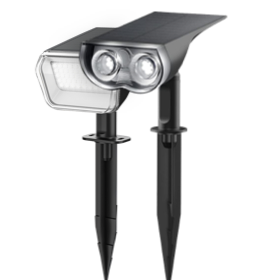Solar Street Lights Pave the Way for Sustainable Urban Development
Solar Street Lights Pave the Way for Sustainable Urban Development
As cities expand at an unprecedented rate, the demand for efficient and sustainable infrastructure grows. One of the most pressing concerns in urban development is street lighting—how can we keep our streets illuminated while reducing energy consumption and minimizing environmental impact? The answer lies in solar street lights, a revolutionary solution that merges technology and sustainability.
Unlike traditional street lights that rely on electricity from non-renewable sources, solar-powered street lights utilize energy collected from the sun, offering an eco-friendly and cost-effective alternative. In this article, we will explore how solar street lights work, their benefits, and why they are shaping the future of urban lighting.
Understanding Solar Street Lights
How Solar Street Lights Work
Solar street lights operate through a simple yet efficient mechanism. During daylight hours, solar panels capture sunlight and convert it into electrical energy, which is stored in batteries. At night, this stored energy powers LED lights, ensuring consistent and autonomous illumination without relying on the electrical grid.
Key Components of a Solar Street Light System
A fully functional solar street light consists of four essential components:
Solar Panel - Captures and converts sunlight into electricity.
Battery - Stores the generated power for nighttime use.
LED Light - Provides energy-efficient illumination.
Controller - Manages the charging and discharging cycles, ensuring optimal performance.
Together, these components create a sustainable, long-lasting lighting system suitable for modern urban landscapes.
Advancements in Solar Technology for Urban Lighting
Recent advancements in solar technology have significantly enhanced the efficiency and durability of solar street lights. Improved photovoltaic cells, higher-capacity batteries, and smart lighting features—such as motion sensors and adaptive brightness control—have made these lights more effective and adaptable to different urban settings.
Linkind Smart Solar Spotlight SL5 incorporates motion sensors and three customizable lighting modes: Group Control: The world's first solar spotlight with wireless capabilities to offer smart group control functionality. Multiple Convenient App Functions: Control smart spotlights with the AiDot App. Adjust color, temperature, brightness, and use group control, music sync, and energy-saving features. Music Sync & Preset Scenes: Sync RGBTW smart solar lights with music by granting microphone permission. Customize effects, preset scenes, or choose from 16 million colors to enhance your outdoor ambiance. Three Optional Lighting Modes: Linkind solar lights feature 3 modes: Motion for safety and efficiency, Luminance for automatic dusk-to-dawn lighting, and Continuous for constant illumination. Enhanced Lighting & Easy Installation: Linkind solar spotlights are adaptable for ground or wall mounting, with 360° horizontal and 180° vertical adjustability.

Motion Mode - Activates illumination only when movement is detected, enhancing both security and energy efficiency.
Dusk-to-Dawn Mode - Provides automatic lighting from sunset to sunrise, ensuring continuous illumination.
Continuous Mode - Delivers a constant light source, suitable for high-traffic areas.
The Linkind Smart Solar Spotlight SL5 is designed as a plug-and-play solution, eliminating complex installations. Multiple SL5 units can also communicate over distances of up to 40 meters, enabling seamless group control even in areas with space between lights.
Related Articles:
Ultimate Guide: Best Outdoor Solar Motion Sensor Lights
Economic Benefits of Solar Street Lights
Initial Investment vs. Long-Term Savings
While the upfront cost of installing solar street lights may be higher than traditional lighting systems, the long-term financial benefits outweigh the initial expenditure. Solar street lights eliminate electricity costs and have minimal operational expenses, resulting in substantial savings over time.
Lower Maintenance Costs
Solar street lights have fewer mechanical and electrical components than conventional street lighting, leading to reduced maintenance and repair expenses. The durability of LED lights and modern battery technology further enhances their cost-effectiveness.
Energy Independence and Price Stability
By utilizing renewable solar energy, cities can reduce dependency on fossil fuels and stabilize energy costs. This independence shields municipalities from fluctuating electricity prices, enabling better budget planning.
Enhancing Urban Infrastructure
Reliability and Grid Independence
Since solar street lights operate independently of the power grid. They remain functional during blackouts and emergencies, providing consistent illumination and improving public safety.
Integration with Smart City Initiatives
Solar street lights can be incorporated into smart city frameworks through IoT connectivity. Features such as remote monitoring, adaptive lighting, and data collection help optimize urban infrastructure and improve city management.
Aesthetic and Environmental Benefits
Beyond functionality, solar street lights contribute to the visual appeal of urban landscapes. Their sleek and modern designs enhance cityscapes, while their eco-friendly operation reduces carbon emissions, supporting sustainability goals.
The Future of Urban Lighting
Emerging Technologies in Solar Street Lighting
Future innovations in solar street lighting include bifacial solar panels (which capture sunlight from both sides), AI-powered light management systems, and energy-sharing networks, further improving efficiency and usability.
Potential for Widespread Adoption
With decreasing costs and continuous technological improvements, solar street lights are becoming a mainstream urban lighting solution. Their widespread adoption will lead to smarter, greener, and more energy-efficient cities.
Impact on Urban Planning and Development
Solar street lights play a crucial role in sustainable urban planning. By integrating them into infrastructure projects, cities can reduce energy consumption, lower carbon footprints, and enhance public safety—paving the way for a more resilient future.
Conclusion
Solar street lights are more than just an energy-efficient alternative; they are a cornerstone of sustainable urban development. By harnessing solar energy, these lights reduce operational costs, improve city resilience, and contribute to a greener planet. As the demand for eco-friendly infrastructure continues to rise, solar-powered street lighting will play a vital role in shaping the cities of tomorrow.
Solar Street Light FAQs
Q1: How long do solar street lights last?
Solar panels typically last 20–25 years, while batteries require replacement every 5–7 years, depending on usage and environmental conditions.
Q2: Are solar street lights suitable for all climates?
Yes. Modern solar street lights are designed to function in various weather conditions, including cloudy and rainy regions. Advanced battery technology ensures energy storage even in low sunlight conditions.
Q3: How much does it cost to install solar street lights?
Installation costs vary depending on model, capacity, and features. However, the long-term savings on electricity and maintenance make solar street lights a cost-effective solution.
Q4: How do solar street lights contribute to smart cities?
Solar street lights can be integrated with smart technologies, enabling features like adaptive lighting, remote monitoring, and data collection. This makes them a key component of smart city infrastructure.







































